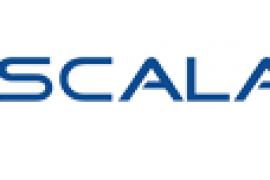News
SCALAR – 15 years at your service
30. May, 2013SCALAR – 15 years at your service
In the spring of 1997, the Milan Vidmar Electric Power Institute in cooperation with Elektro Slovenia setup the first Slovenian real-time lightning localization system. The system was based on three direction finding sensors. Each of them detected the electro-magnetic wave caused by a lightning discharge. Basically, it determined the detection parameters: direction, signal power and the number of return strokes. By applying the software provided by the Finnish Institute of Meteorology we were able to calculate the location of lightning discharge in real time.
In 1998 the system was upgraded to the new Slovenian automatic lightning location system (SCALAR), with two time-of-arrival LPATS III sensors.
Since at least four sensors are needed to correctly calculate the lightning location, we decided to join forces with the Austrian lightning location system ALDIS, with which we still cooperate.
Together with partners from Germany and Austria the European Cooperation for Lightning Detection (EUCLID) was established in 2000. It is based on the Internet data exchange. The network has been expanding and today, the EUCLID system covers the continental Europe with more than 150 sensors set from Sicily to North Cape.
In June, 15 years will have passed since the start of operation of the SCALAR system, which has been utilised in numerous areas of work since 1998 – in the field of electric power system, meteorology, railways and telecommunications, air traffic control and the insurance industry. We are glad that we have been able to develop and upgrade this system for all 15 years with all our loyal users.
We wish to further our knowledge and services in the future and that our efforts will reflect in the satisfaction of our esteemed users.
You can find more information about the SCALAR system at www.scalar.si


